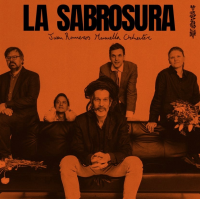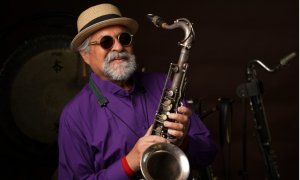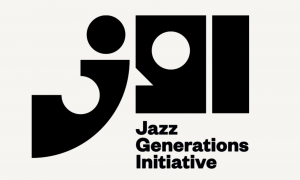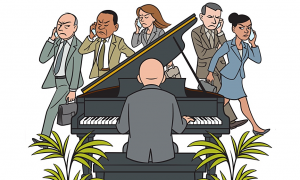Crossover! Heaven forbid!
To many classical music critics and tradition-minded artists, the commercial crossover projects in the last two decades are sure signs, in the words of the esteemed British baritone Thomas Allen, that well- organized hijackers and money-grabbing, P.R.-led marketers are using wet T-shirted violinists to horror or horrors sell classical records.
Whew. No wonder Ms. Fleming is at pains to distinguish Dark Hope from crossover. But what is crossover exactly?
In her liner notes for the album, just released in Europe and due in the United States on June 8, she writes that the “genre referred to as crossover usually has performers singing popular music in a classically trained style with amplification and traditional instrumentation." Her goal, she explains, “is to bypass the middle ground and get to the other side of the divide entirely." In an interview included with the promotional materials, she is blunter, asserting that “this album is not crossover," that it occupies the “other extreme of the spectrum," that making the recording was like visiting “a parallel universe."
Ms. Fleming and her handlers are being curiously sheepish about her legitimate accomplishments on this album. Vocally she has turned herself into an indie rock singer: from the opening track, the Muse song “Endlessly" (available since March as a single on iTunes), she sounds more like Annie Lennox than “Americas favorite soprano," as she has long been billed. I would not have guessed that this was Rene Fleming from the hushed, breathy, deep-set singing captured here.
So why the defensiveness? In concept there is nothing wrong with artists from one genre performing music from another. And classical crossover has an honorable history, dating from the early decades of recording, when Caruso made as much money from his hit recordings of popular songs like “For You Alone" and “Over There" (George M. Cohan's rally-the-home-front song during World War I) as from arias like “La donna e'mobile" and “Vesti la giubba."
In the beginning crossover ventures were harmless fun. In the 1940s, when the Wagnerian soprano Helen Traubel recorded “Oh, What a Beautiful Mornin" and “Take Me Out to the Ballgame," her fans were delighted, though her pop work, which included occasional appearances in nightclubs and even a Broadway show, Rodgers & Hammerstein's “Pipe Dream," caused ripples of disdain in the opera houses where she sang. The genre earned its bad rap over the years from innumerable pandering recordings, like Plcido Domingos 1981 album Perhaps Love, which featured a duet with John Denver in the title song. Mawkish to be sure, but within months it went gold on the charts.
Even Sopranos Get the Blues
FOR months now, the acclaimed soprano Rene Fleming, her recording company and her public relations agency have been working hard to make one thing clear: Dark Hope, her new Decca recording of indie rock songs, is not a crossover project.


























